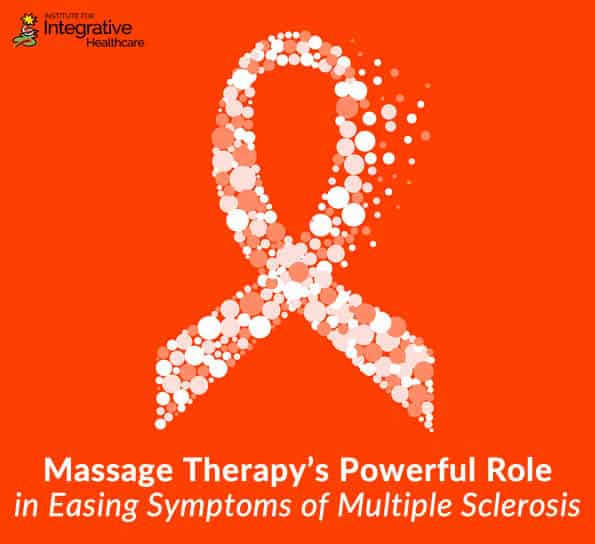

Multiple Sclerosis (MS) is a chronic inflammatory disease of the central nervous system. MS manifests in different patterns of inflammation based on the location and levels of scarring, demyelination and axonal damage throughout the brain and spinal cord which leads to a wide range of symptoms. Damage occurs where the immune system attacks the myelin, a protective layer around nerve fibers. This inflammation, scar tissue and lesions to the nerves result in a wide range of symptoms. MS generally targets those between ages 20 and 40.
4 Main Types of Multiple Sclerosis
- Relapsing-remitting MS (RRMS): Relapsing-remitting MS (RRMS) involves defined relapses of the disease following remissions. During remission, the disease does not progress.
- Clinically isolating syndrome (CIS): Clinically isolating syndrome (CIS) is defined by one episode of symptoms due to demyelination that lasts 24 hours or longer. These episodes can be monofocal with one lesion causing one symptom, or multifocal with more than one lesion and/or symptom.
- Primary-progressive MS (PPMS): Primary-progressive MS (PPMS) involves progressively declining neurological function for the onset of symptoms.
- Secondary-progressive MS (SPMS) is the term for when Relapsing-remitting MS becomes more progressive and symptoms become more constant.
3 Major Symptoms of Multiple Sclerosis
MS is ultimately a disease that results in the deterioration of the central nervous system because of inflammation. The symptoms of MS can significantly impact the quality of life for patients. Fatigue, pain and spasticity are the three major disruptive symptoms of those with MS.
- Fatigue is the most commonly reported symptom of MS, with 80% of people experiencing fatigue and often extreme fatigue, which can become debilitating. Muscle weakness can result in the inability to work, and even to walk. Balance can become difficult because of extreme fatigue and weakness.
- Pain affects anywhere from 30% to 90% of MS patients, depending on the parameters of the study and can also negatively impact the patients’ quality of life and ability to perform basic activities of daily living.
- Finally, spasticity is reported in about 80% of MS patients, and spasticity is most likely to be disruptive to everyday function and mobility as balance is affected.
Massage Therapy has Been Shown to Reduce Symptoms of Fatigue, Pain and Spasticity
Massage has long been shown to reduce fatigue and pain, as well as to reduce swelling and inflammation throughout the body and muscle tissues. Pain reduction is partly due to a reduction in stress, which exacerbates the pain, and partly due to the reduction of tension in muscle tissue and the increase of joint mobility. Massage therapy can help reduce pain by addressing both issues.
Swedish massage increases circulation by physically moving blood and fluid throughout the body, increasing circulation and brining fresh, oxygenated blood to muscle tissues. Increased capillary dilation through light stroking also increases the movement of lymphatic fluid, reducing swelling and inflammation. This increase in circulation can also aid in the reduction of pressure sores, which may occur when extreme fatigue results in lack of mobility. Massage has also been shown to help with reducing spasticity by relaxing the muscle and improving the range of motion of muscle and joints. Massage has also been shown to improve mood, improve body image and provide a sense of well-being, which is often in short supply in those who suffer with MS.
Cautions
While there are many positive effects of massage therapy on those with MS, there are also some cautions and considerations to consider when working with this population. Because those with MS suffer from extreme fatigue, becoming too relaxed after a massage can literally mean not being able to get up off the table. Extreme fatigue can be exacerbated by the total relaxation of muscle tissue, leaving the MS sufferer unable to function.
4 More Considerations When Working with MS Patients
- Often it can be difficult to position the patient comfortably because of their pain and spasticity.
- Their mobility issues may make it difficult to get them settled on the table or to turn over or get up off the table safely.
- Deep tissue massage and trigger point therapy may actually increase the symptoms of pain and fatigue, as it may overload the central nervous system and temporarily increase inflammation, making things worse.
- Myofascial release work can also be too intense for MS patients.
The Best 3 Modalities of Massage Therapy to Use with MS Patients
The best modalities of massage therapy for use with MS sufferers are those that involve light to moderate pressure and/or which address reflexes without direct contact to the entire body.
- Swedish massage done with light to moderate pressure has been demonstrated to offer MS sufferers considerable relief, as has gentle reflexology.
- Reflexology has been shown to address the nervous system without adding undue pressure to the muscles. Gentle joint mobility exercises can help to restore mobility and reduce the rate of its decline.
- Light acupressure, which works on the energy meridians of the body, can improve energy levels and restore some balance to the body without overstimulating the nervous system with full body contact.
Because the symptoms of each MS patient vary depending on the location and severity of the damage in their brain and spinal column, the massage therapy needs of each MS patient will vary as well. Massage therapists may have to use their knowledge and experience to blend several modalities together, creating the best therapeutic massage session possible for the individual MS client.











